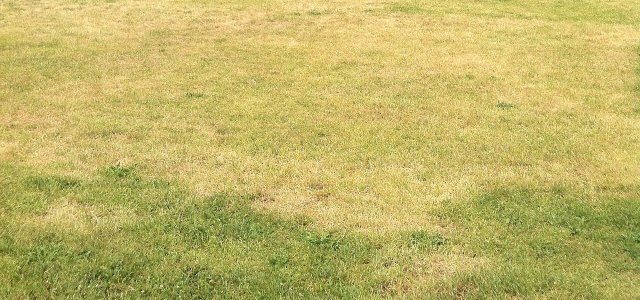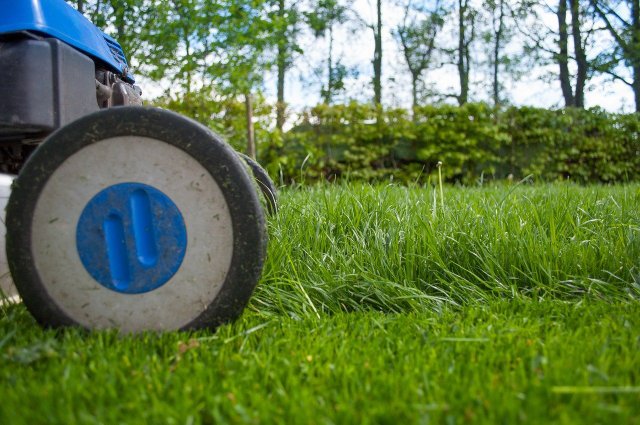
If the lawn is overfertilized, this is often indicated by yellow spots. Here we explain how you can recognize an overfertilized lawn and what you can do now.
To ensure that the lawn receives sufficient nutrients, many amateur gardeners like to add fertilizer. But it can quickly happen that the lawn is overfertilized. This can have several reasons:
If you use a spreader for fertilizer, you have to make sure that the lanes do not overlap. Otherwise, twice as much fertilizer will fall there.
Those who spread fertilizer by hand must reckon with the fact that the fertilizer grains are not evenly distributed over the entire lawn area. Here, there is a particularly quick risk that the lawn will be overfertilized.
Contents
Lawn overfertilized? These are signs

When is the lawn overfertilized and when is some other reason the cause of yellow or bare patches?
- Yellow streaks (also called burns) on the lawn that appear a few weeks after fertilizing by spreader are a clear sign that you have applied too much fertilizer.
- Small, isolated bald patches and discoloration, on the other hand, don’t have to be due to too much fertilizer. In a new lawn, the lawn seed mix may not be handling the soil as well.
- Other reasons for small yellow spots in the lawn are gasoline drops from the lawn mower or cleaning agent in the water that was poured out on the lawn (cleaning water does not belong on the lawn).
What to do when the lawn is overfertilized?
If the lawn is overfertilized, the following measures will help:
- Water the lawn so that the fertilizer is better distributed and diluted. A lawn sprinkler is recommended for this purpose.
- If you have just fertilized the lawn, remove visible fertilizer grains with gloves.
- If the fertilizer grains are still quite fresh, but already deeper in the lawn, you can rake them out and remove them.
- In general, it is better to use organic fertilizer instead of mineral fertilizer. This is because the nitrogen component is bound in organic fertilizer (for example, in horn shavings). Overfertilization is therefore not so easy.
To avoid overfertilizing your lawn, here’s what you can do:
- Avoid overlapping lanes with the spreader. If there is some space between the lanes, it doesn’t matter. This is because the fertilizer also provides nutrients to the surrounding grasses.
- Furthermore, it is recommended to initially dose the fertilizer lower than specified and better to fertilize again after three to four weeks, if this is actually necessary.
Overfertilized or not? If the lawn is always yellow and dried up
If the lawn looks yellow and dried up very often in the summer, not always too much fertilizer must be the cause. There are other possible reasons:
- You mowed the lawn too early or too short
- The lawn has received too little light, for example because too much clippings were left behind (here helps: Scarifying the lawn).
- The lawn has received too little water in the summer.
- The soil quality is not good, the soil may be too acidic. A pH test from the hardware store can easily provide information about this. A little lime will help against acid soil
- If you have not fertilized the lawn at all, a nutrient deficiency may be the cause. In this case, organic fertilizer can help

